
I was diagnosed with brain cancer about 16 years ago. I received chemotherapy and went into remission, but the cancer came back and I endured two surgeries and 13 months of chemotherapy. I asked my oncologist if I ought to change my diet to avoid another recurrence. His answer was perfectly stereotypical: "Eat what you like. It won't make much difference."
He was wrong.
The extensive research published in the last decade alone proves that what you eat can have a profound effect on your protection against cancer. But my doctor's answer was hardly surprising. It's a little-known fact that nutrition is barely taught in med schools, where the solution to most problems is a drug. And doctors don't trust patients to make lifestyle changes. I recall a conversation with a fellow physician at a conference after I spoke on the importance of a healthy diet in fighting disease. "You may be right, David, but people don't want to change," he said. "They just want to take a pill and forget about it." I don't know whether he's right, but after all the study I've done, I know it isn't true for me.
Discovering cancer-fighting foods
I spent months researching the healing powers of food before I fully grasped my own natural cancer-fighting potential. I met with a variety of researchers, scoured medical databases, and combed scientific publications. I traveled all over the world and consulted experts from nearly every continent.
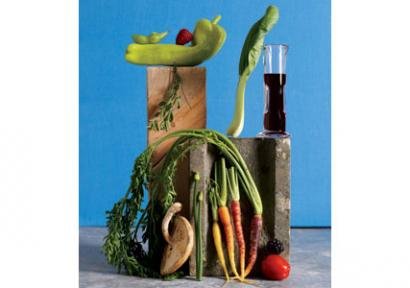
In my quest, I discovered that the list of cancer-fighting foods is actually quite long. Some foods block natural bodily processes such as inflammation that fuels cancer growth. Others force cancer cells to die through a process that specialists call apoptosis. Still other foods assist the body in detoxifying cancer-causing toxins or protecting against free radicals. But most of them attack the disease on a variety of fronts. And they do it every day, three times a day, without provoking any side effects. To avoid the disease, it's essential to take advantage of this natural protection, and nurture it.I've learned that the anticancer diet is the exact opposite of the typical American meal: mostly colorful vegetables and legumes, plus unsaturated fats (olive, canola, or flaxseed oils), garlic, herbs, and spices. Meat and eggs are optional. Through extensive research, I devised a list of the most promising cancer fighters, along with recommendations on how to make the most of their potential. Include at least one, and preferably two, at every meal, to maximize your protection.Disease-proof your life
I've learned that the anticancer diet is the exact opposite of the typical American meal: mostly colorful vegetables and legumes, plus unsaturated fats (olive, canola, or flaxseed oils), garlic, herbs, and spices. Meat and eggs are optional. Through extensive research, I devised a list of the most promising cancer fighters, along with recommendations on how to make the most of their potential. Include at least one, and preferably two, at every meal, to maximize your protection.
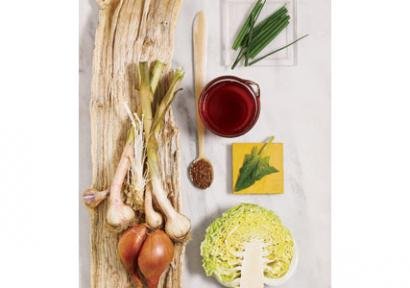
Best drinks for bettering your body
Green tea is rich in compounds called polyphenols, including catechins (and particularly EGCG), which reduce the growth of new blood vessels that feed tumors. It's also a powerful antioxidant and detoxifier (activating enzymes in the liver that eliminate toxins from the body), and it encourages cancer cell death. In the laboratory, it has even been shown to increase the effect of radiation on cancer cells.
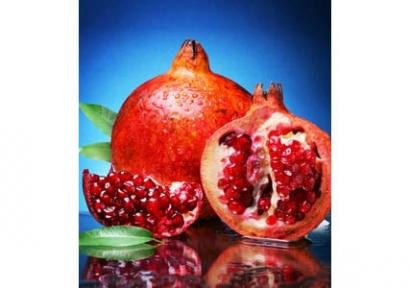
Japanese green tea (sencha, gyokuro, matcha, etc.) contains more EGCG than common varieties of Chinese green tea, making it the most potent source on the market; look in Asian groceries and tea shops. Black and oolong teas, commonly used to produce popular tea blends such as Earl Grey, are less effective because they've been fermented, which destroys a large proportion of their polyphenols. Decaffeinated green teas, which retain the polyphenols despite the process of decaffeination, are also an option if you're sensitive to caffeine.
How to drink it: Sip 2 to 3 cups a day within an hour of brewing. Green tea must be steeped for at least 5 to 8 minutes—ideally 10—to release its catechins, but it loses its beneficial polyphenols after an hour or two.
Pomegranate Juice This juice, which tastes like raspberries, has been used in Persian medicine for thousands of years. Its antioxidant and anti-inflammatory properties are well confirmed; studies show it can substantially reduce the development of even the most aggressive prostate cancers (among others). In addition, drinking it daily slows the spread of an established prostate cancer by more than 50%. How to drink it: Have 8 ounces daily with breakfast.
Season liberally for anti-inflammatory benefits
Fresh ginger, or gingerroot, is a powerful anti-inflammatory that combats certain cancer cells and helps slow tumor growth. A ginger infusion can also alleviate nausea from chemotherapy or radiotherapy.
How to use it: Add grated fresh ginger to a vegetable stir-fry or fruit salad. Or, make an infusion by slicing a 1-inch piece of ginger and steeping it in boiling water for 10 to 15 minutes; drink hot or cold.
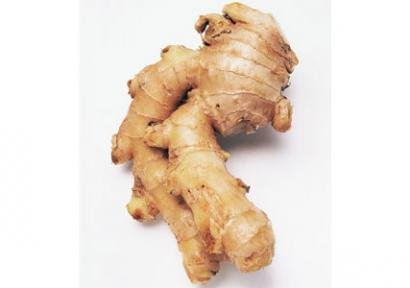
Turmeric Found in curry powder, this spice is the most powerful natural anti-inflammatory available today. It encourages cancer cell death, inhibits tumor growth, and even enhances the effectiveness of chemotherapy. Some research shows that turmeric is most effective in humans when it's mixed with black pepper and dissolved in oil (olive or canola, preferably). In store-bought curry mixes, turmeric represents only 20% of the total, so it's better to obtain ground turmeric directly from a spice shop.
How to use it: Mix a teaspoon of turmeric powder with a teaspoon of olive oil and a generous pinch of ground black pepper and add to vegetables, soups, and salad dressings. Use a tablespoon if you already have cancer.
Stock a cancer-fighting shopping cart
Brussels sprouts, bok choy, Chinese cabbage, broccoli, and cauliflower all contain sulforaphane and indole-3-carbinols (I3Cs), two potent anticancer molecules. These molecules help the body detoxify certain carcinogenic substances and can help prevent precancerous cells from developing into malignant tumors. They also promote the suicide of cancer cells and block tumor growth.
How to prepare them: Cover and steam briefly or stir-fry rapidly with a little olive oil. Avoid boiling cabbage and broccoli, which destroys their cancer-fighting compounds.
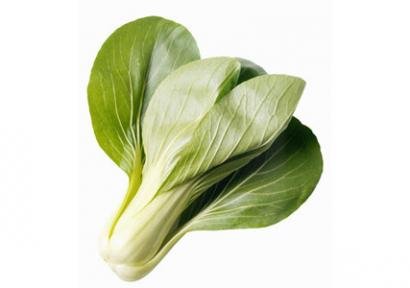
Garlic, Onions, Leeks, Shallots, Chives The sulfur compounds found in this group (the alliaceous family) promote the death of colon, breast, lung, and prostate cancer cells. Epidemiological studies also suggest a lower risk of kidney and prostate cancer in people who consume the most garlic.
How to eat them: The active compounds in garlic are released when you crush the clove, and they're much more easily absorbed if they're combined with a small amount of oil. Sauté chopped garlic and onions in a little olive oil, mix with steamed or stir-fried vegetables, and toss with black pepper and turmeric. They can also be consumed raw, mixed in salads, or layered on sandwiches.
Sub out chicken and meat to prevent disease
Compounds called isoflavones (including genistein, daidzein, and glycitein) prevent tumor growth and block the stimulation of cancer cells by sex hormones (such as estrogens and testosterone). There are significantly fewer breast cancer cases among Asian women who have eaten soy since adolescence, and when they do have breast cancer, their tumors are usually less aggressive with higher survival rates. Isoflavone supplements (in pill form) have been associated with an aggravation of certain breast cancers, but whole soy, eaten as food, has not.
How to eat it: Replace conventional milk products with soy milk or soy yogurts for breakfast. Also, use tofu, tempeh, and miso in soups and stir-fries.
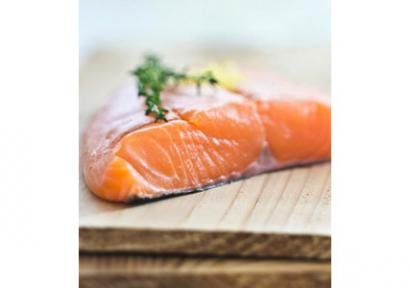
Fatty Fish The risk of several cancers is significantly lower in people who eat fish at least twice a week. Several studies discovered that the anti-inflammatory long-chain omega-3s found in fatty fish (or in high-quality purified fish-oil supplements) can help slow cancer cell growth in a large number of tumors (lung, breast, colon, prostate, kidney, etc.).
How to eat it: Have a seafood-based meal two or three times a week. Choose small fish, such as anchovies, small mackerel, and sardines (including canned sardines, provided they are preserved in olive oil and not in sunflower oil, which is too rich in pro-inflammatory omega-6 fats). Small fish contain fewer environmental toxins such as PCBs and mercury. Wild salmon is also a good source of omega-3 fats, and the level of contamination is still acceptable. Choose fresh over frozen whenever possible, because omega-3 content degrades over time.Fresh and frozen fruit varieties provide year-round protection
Oranges, tangerines, lemons, and grapefruit contain anti-inflammatory compounds called flavonoids that stimulate the detoxification of carcinogens by the liver. Certain flavonoids in the skin of tangerines—tangeritin and nobiletin—can also help promote the death of brain cancer cells.
How to eat it: Sprinkle grated citrus zest (from organic fruits) into salad dressings or breakfast cereals, or steep in tea or hot water. Eat whole fruits out of hand, toss with other fruits in a salad, or use in a salsa to season grilled fish.
Hi! I am a content-detection robot. This post is to help manual curators; I have NOT flagged you.
Here is similar content:
http://www.prevention.com/food/food-remedies/one-doctors-personal-food-cures-cancer
NOTE: I cannot tell if you are the author, so ensure you have proper verification in your post (or in a reply to me), for humans to check!
Downvoting a post can decrease pending rewards and make it less visible. Common reasons:
Submit